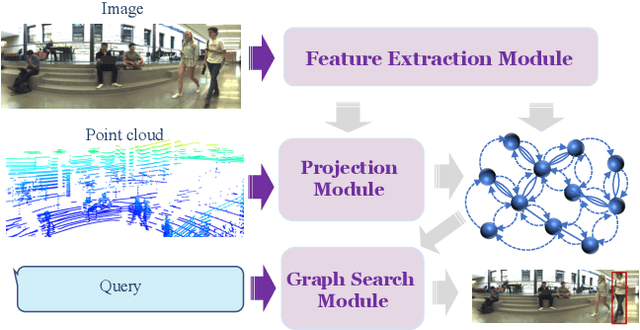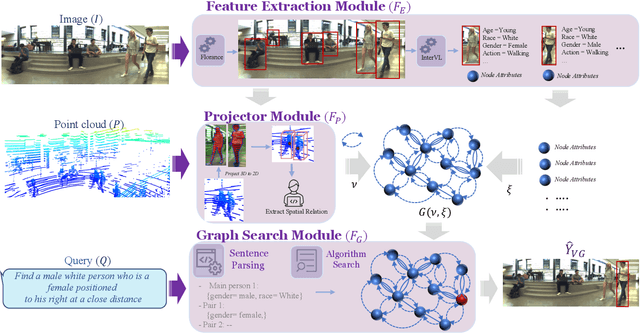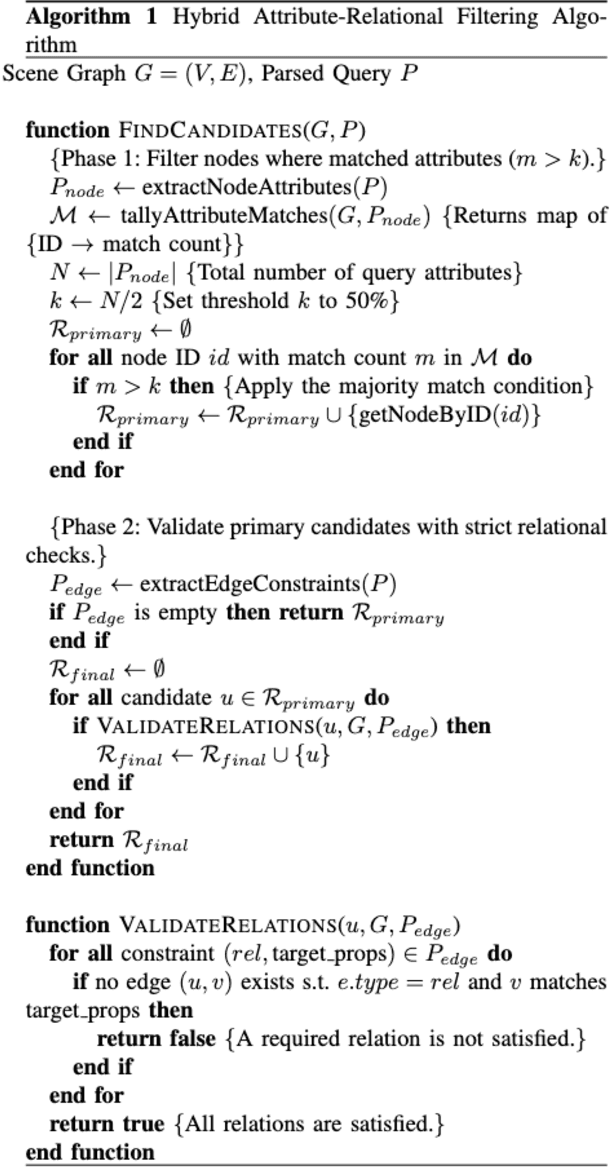Hamid Rezatofighi
ASAP-Textured Gaussians: Enhancing Textured Gaussians with Adaptive Sampling and Anisotropic Parameterization
Dec 16, 2025Abstract:Recent advances have equipped 3D Gaussian Splatting with texture parameterizations to capture spatially varying attributes, improving the performance of both appearance modeling and downstream tasks. However, the added texture parameters introduce significant memory efficiency challenges. Rather than proposing new texture formulations, we take a step back to examine the characteristics of existing textured Gaussian methods and identify two key limitations in common: (1) Textures are typically defined in canonical space, leading to inefficient sampling that wastes textures' capacity on low-contribution regions; and (2) texture parameterization is uniformly assigned across all Gaussians, regardless of their visual complexity, resulting in over-parameterization. In this work, we address these issues through two simple yet effective strategies: adaptive sampling based on the Gaussian density distribution and error-driven anisotropic parameterization that allocates texture resources according to rendering error. Our proposed ASAP Textured Gaussians, short for Adaptive Sampling and Anisotropic Parameterization, significantly improve the quality efficiency tradeoff, achieving high-fidelity rendering with far fewer texture parameters.
A Multi-Modal Neuro-Symbolic Approach for Spatial Reasoning-Based Visual Grounding in Robotics
Oct 30, 2025



Abstract:Visual reasoning, particularly spatial reasoning, is a challenging cognitive task that requires understanding object relationships and their interactions within complex environments, especially in robotics domain. Existing vision_language models (VLMs) excel at perception tasks but struggle with fine-grained spatial reasoning due to their implicit, correlation-driven reasoning and reliance solely on images. We propose a novel neuro_symbolic framework that integrates both panoramic-image and 3D point cloud information, combining neural perception with symbolic reasoning to explicitly model spatial and logical relationships. Our framework consists of a perception module for detecting entities and extracting attributes, and a reasoning module that constructs a structured scene graph to support precise, interpretable queries. Evaluated on the JRDB-Reasoning dataset, our approach demonstrates superior performance and reliability in crowded, human_built environments while maintaining a lightweight design suitable for robotics and embodied AI applications.
Explain Before You Answer: A Survey on Compositional Visual Reasoning
Aug 24, 2025



Abstract:Compositional visual reasoning has emerged as a key research frontier in multimodal AI, aiming to endow machines with the human-like ability to decompose visual scenes, ground intermediate concepts, and perform multi-step logical inference. While early surveys focus on monolithic vision-language models or general multimodal reasoning, a dedicated synthesis of the rapidly expanding compositional visual reasoning literature is still missing. We fill this gap with a comprehensive survey spanning 2023 to 2025 that systematically reviews 260+ papers from top venues (CVPR, ICCV, NeurIPS, ICML, ACL, etc.). We first formalize core definitions and describe why compositional approaches offer advantages in cognitive alignment, semantic fidelity, robustness, interpretability, and data efficiency. Next, we trace a five-stage paradigm shift: from prompt-enhanced language-centric pipelines, through tool-enhanced LLMs and tool-enhanced VLMs, to recently minted chain-of-thought reasoning and unified agentic VLMs, highlighting their architectural designs, strengths, and limitations. We then catalog 60+ benchmarks and corresponding metrics that probe compositional visual reasoning along dimensions such as grounding accuracy, chain-of-thought faithfulness, and high-resolution perception. Drawing on these analyses, we distill key insights, identify open challenges (e.g., limitations of LLM-based reasoning, hallucination, a bias toward deductive reasoning, scalable supervision, tool integration, and benchmark limitations), and outline future directions, including world-model integration, human-AI collaborative reasoning, and richer evaluation protocols. By offering a unified taxonomy, historical roadmap, and critical outlook, this survey aims to serve as a foundational reference and inspire the next generation of compositional visual reasoning research.
JRDB-Reasoning: A Difficulty-Graded Benchmark for Visual Reasoning in Robotics
Aug 14, 2025Abstract:Recent advances in Vision-Language Models (VLMs) and large language models (LLMs) have greatly enhanced visual reasoning, a key capability for embodied AI agents like robots. However, existing visual reasoning benchmarks often suffer from several limitations: they lack a clear definition of reasoning complexity, offer have no control to generate questions over varying difficulty and task customization, and fail to provide structured, step-by-step reasoning annotations (workflows). To bridge these gaps, we formalize reasoning complexity, introduce an adaptive query engine that generates customizable questions of varying complexity with detailed intermediate annotations, and extend the JRDB dataset with human-object interaction and geometric relationship annotations to create JRDB-Reasoning, a benchmark tailored for visual reasoning in human-crowded environments. Our engine and benchmark enable fine-grained evaluation of visual reasoning frameworks and dynamic assessment of visual-language models across reasoning levels.
Probabilistic Active Goal Recognition
Jul 29, 2025Abstract:In multi-agent environments, effective interaction hinges on understanding the beliefs and intentions of other agents. While prior work on goal recognition has largely treated the observer as a passive reasoner, Active Goal Recognition (AGR) focuses on strategically gathering information to reduce uncertainty. We adopt a probabilistic framework for Active Goal Recognition and propose an integrated solution that combines a joint belief update mechanism with a Monte Carlo Tree Search (MCTS) algorithm, allowing the observer to plan efficiently and infer the actor's hidden goal without requiring domain-specific knowledge. Through comprehensive empirical evaluation in a grid-based domain, we show that our joint belief update significantly outperforms passive goal recognition, and that our domain-independent MCTS performs comparably to our strong domain-specific greedy baseline. These results establish our solution as a practical and robust framework for goal inference, advancing the field toward more interactive and adaptive multi-agent systems.
Physics-Grounded Motion Forecasting via Equation Discovery for Trajectory-Guided Image-to-Video Generation
Jul 09, 2025Abstract:Recent advances in diffusion-based and autoregressive video generation models have achieved remarkable visual realism. However, these models typically lack accurate physical alignment, failing to replicate real-world dynamics in object motion. This limitation arises primarily from their reliance on learned statistical correlations rather than capturing mechanisms adhering to physical laws. To address this issue, we introduce a novel framework that integrates symbolic regression (SR) and trajectory-guided image-to-video (I2V) models for physics-grounded video forecasting. Our approach extracts motion trajectories from input videos, uses a retrieval-based pre-training mechanism to enhance symbolic regression, and discovers equations of motion to forecast physically accurate future trajectories. These trajectories then guide video generation without requiring fine-tuning of existing models. Evaluated on scenarios in Classical Mechanics, including spring-mass, pendulums, and projectile motions, our method successfully recovers ground-truth analytical equations and improves the physical alignment of generated videos over baseline methods.
Marginalized Generalized IoU (MGIoU): A Unified Objective Function for Optimizing Any Convex Parametric Shapes
Apr 24, 2025Abstract:Optimizing the similarity between parametric shapes is crucial for numerous computer vision tasks, where Intersection over Union (IoU) stands as the canonical measure. However, existing optimization methods exhibit significant shortcomings: regression-based losses like L1/L2 lack correlation with IoU, IoU-based losses are unstable and limited to simple shapes, and task-specific methods are computationally intensive and not generalizable accross domains. As a result, the current landscape of parametric shape objective functions has become scattered, with each domain proposing distinct IoU approximations. To address this, we unify the parametric shape optimization objective functions by introducing Marginalized Generalized IoU (MGIoU), a novel loss function that overcomes these challenges by projecting structured convex shapes onto their unique shape Normals to compute one-dimensional normalized GIoU. MGIoU offers a simple, efficient, fully differentiable approximation strongly correlated with IoU. We then extend MGIoU to MGIoU+ that supports optimizing unstructured convex shapes. Together, MGIoU and MGIoU+ unify parametric shape optimization across diverse applications. Experiments on standard benchmarks demonstrate that MGIoU and MGIoU+ consistently outperform existing losses while reducing loss computation latency by 10-40x. Additionally, MGIoU and MGIoU+ satisfy metric properties and scale-invariance, ensuring robustness as an objective function. We further propose MGIoU- for minimizing overlaps in tasks like collision-free trajectory prediction. Code is available at https://ldtho.github.io/MGIoU
AerOSeg: Harnessing SAM for Open-Vocabulary Segmentation in Remote Sensing Images
Apr 12, 2025



Abstract:Image segmentation beyond predefined categories is a key challenge in remote sensing, where novel and unseen classes often emerge during inference. Open-vocabulary image Segmentation addresses these generalization issues in traditional supervised segmentation models while reducing reliance on extensive per-pixel annotations, which are both expensive and labor-intensive to obtain. Most Open-Vocabulary Segmentation (OVS) methods are designed for natural images but struggle with remote sensing data due to scale variations, orientation changes, and complex scene compositions. This necessitates the development of OVS approaches specifically tailored for remote sensing. In this context, we propose AerOSeg, a novel OVS approach for remote sensing data. First, we compute robust image-text correlation features using multiple rotated versions of the input image and domain-specific prompts. These features are then refined through spatial and class refinement blocks. Inspired by the success of the Segment Anything Model (SAM) in diverse domains, we leverage SAM features to guide the spatial refinement of correlation features. Additionally, we introduce a semantic back-projection module and loss to ensure the seamless propagation of SAM's semantic information throughout the segmentation pipeline. Finally, we enhance the refined correlation features using a multi-scale attention-aware decoder to produce the final segmentation map. We validate our SAM-guided Open-Vocabulary Remote Sensing Segmentation model on three benchmark remote sensing datasets: iSAID, DLRSD, and OpenEarthMap. Our model outperforms state-of-the-art open-vocabulary segmentation methods, achieving an average improvement of 2.54 h-mIoU.
Mobile-VideoGPT: Fast and Accurate Video Understanding Language Model
Mar 27, 2025Abstract:Video understanding models often struggle with high computational requirements, extensive parameter counts, and slow inference speed, making them inefficient for practical use. To tackle these challenges, we propose Mobile-VideoGPT, an efficient multimodal framework designed to operate with fewer than a billion parameters. Unlike traditional video large multimodal models (LMMs), Mobile-VideoGPT consists of lightweight dual visual encoders, efficient projectors, and a small language model (SLM), enabling real-time throughput. To further improve efficiency, we present an Attention-Based Frame Scoring mechanism to select the key-frames, along with an efficient token projector that prunes redundant visual tokens and preserves essential contextual cues. We evaluate our model across well-established six video understanding benchmarks (e.g., MVBench, EgoSchema, NextQA, and PercepTest). Our results show that Mobile-VideoGPT-0.5B can generate up to 46 tokens per second while outperforming existing state-of-the-art 0.5B-parameter models by 6 points on average with 40% fewer parameters and more than 2x higher throughput. Our code and models are publicly available at: https://github.com/Amshaker/Mobile-VideoGPT.
DWIM: Towards Tool-aware Visual Reasoning via Discrepancy-aware Workflow Generation & Instruct-Masking Tuning
Mar 25, 2025



Abstract:Visual reasoning (VR), which is crucial in many fields for enabling human-like visual understanding, remains highly challenging. Recently, compositional visual reasoning approaches, which leverage the reasoning abilities of large language models (LLMs) with integrated tools to solve problems, have shown promise as more effective strategies than end-to-end VR methods. However, these approaches face limitations, as frozen LLMs lack tool awareness in VR, leading to performance bottlenecks. While leveraging LLMs for reasoning is widely used in other domains, they are not directly applicable to VR due to limited training data, imperfect tools that introduce errors and reduce data collection efficiency in VR, and challenging in fine-tuning on noisy workflows. To address these challenges, we propose DWIM: i) Discrepancy-aware training Workflow generation, which assesses tool usage and extracts more viable workflows for training; and ii) Instruct-Masking fine-tuning, which guides the model to only clone effective actions, enabling the generation of more practical solutions. Our experiments demonstrate that DWIM achieves state-of-the-art performance across various VR tasks, exhibiting strong generalization on multiple widely-used datasets.
 Add to Chrome
Add to Chrome Add to Firefox
Add to Firefox Add to Edge
Add to Edge